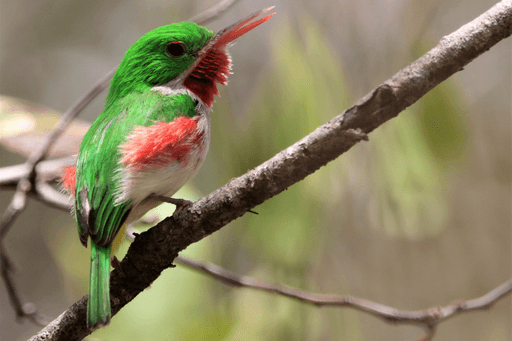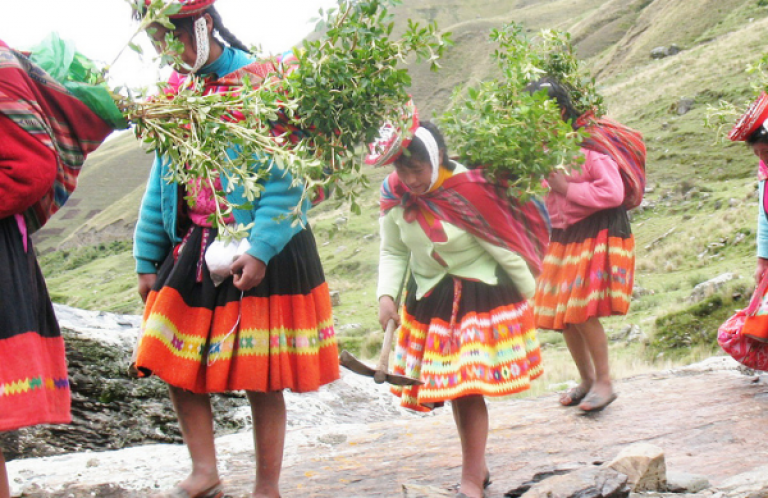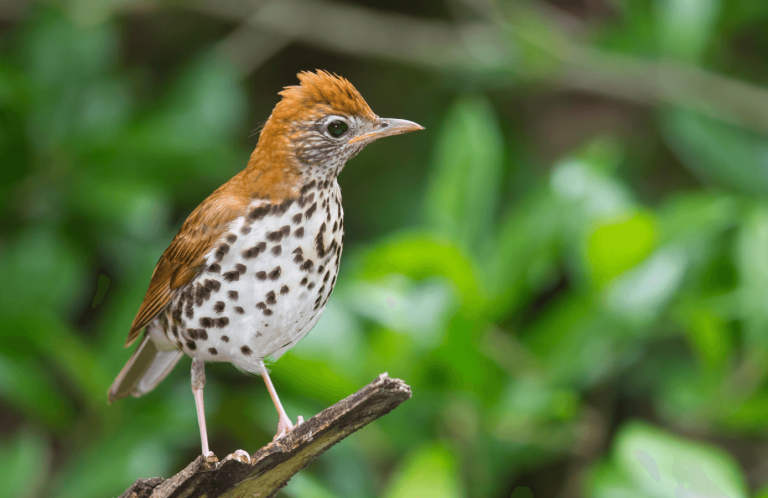Habitat on Tropical Farms Can Be a Sweet Deal for People and Birds Alike

Earlier this month, the Smithsonian Zoo and Conservation Institute launched a Bird Friendly® cacao certification, following up on a Bird Friendly® coffee certification program launched two decades ago. Now, shoppers can indulge in some of their favorite treats with the assurance that they are sourced from farms with favorable habitat for birds.
American Bird Conservancy (ABC) helped to facilitate this important milestone, making the connection between partner Zorzal Cacao in the Dominican Republic and the Smithsonian. ABC also supported the implementation of the pilot phase that led to the first-ever certified Bird Friendly® cacao farms.
But ABC's work with farmers goes far beyond our work with Zorzal Cacao — ABC is actively investing in farmers and ranchers across Latin America and the Caribbean who practice agroforestry (crops grown alongside trees) or rotational livestock grazing. Working lands that include native trees or native grasslands are an essential part of bird habitat conservation across the region.
Why Does ABC Support Sustainable Agriculture in Latin America and the Caribbean?

ABC will always work tirelessly to conserve native forest and grasslands in Latin America and the Caribbean by supporting our local partners' efforts to create and manage private reserves. But demand for goods like coffee, cacao, and beef isn't going anywhere, and neither are the farms that supply these products.
We work with farmers and ranchers to encourage more bird-friendly growing and grazing methods, then help them find a market for their products. Sustainable farms don't host the exact same makeup of bird species as natural forests or grasslands, but they are a place where many birds can happily thrive, and they support far more species than a clear-cut forest. The key is to create additional habitat and corridors between existing forests, and that is what ABC is working to achieve.
“Through the implementation of best practices, farmers and ranchers can provide good habitat for migratory birds,” said Andrés Anchondo, Associate Director of Impact Investment in Latin America and the Caribbean for ABC. “This is particularly important in Central America and the Caribbean, where migratory birds have a much smaller area of habitat than they do on their breeding grounds in North America.”
What Makes a Tropical Farm Welcoming to Birds?
In tropical areas that are historically heavily forested, farms with a good mix of native trees and shrubs can still support a lot of wildlife. On the other hand, monoculture farms, also called sun crops, involve clear-cutting forests and replacing them with rows of a single money-making plant. These kinds of farms are essentially ecological deserts that support very little wildlife.
So, more plant diversity is good, but how much is enough? A study conducted to inform the new Bird Friendly® cacao certification looked into that question. Researchers found that cacao farms with at least 40 percent forest cover actually support a level of bird diversity similar to the surrounding native forests. In terms of plant diversity, most birds fared well as long as there were at least 11 native shade tree species.
Some migratory species actually seem to prefer diverse agroforestry farms to the surrounding native forest, according to the study. However, it's a different story for birds that are adapted to living in tropical forests year-round. Some native bird species avoid even the most densely shaded agroforestry farms.
The ideal farm, then, has some land left completely wild, with the rest cultivated as an agroforesty system with a diverse mix of plants.
What Does ABC Do to Support and Encourage Sustainable Agroforestry?
ABC works with Zorzal Cacao (“zorzal” is Spanish for “thrush”) in the Dominican Republic to help conserve habitat for migratory species including the Bicknell's Thrush and Black-throated Blue Warbler, and native species like the diminutive Broad-billed Tody.
Zorzal's 1,019-acre private reserve, established in 2012, protects crucial habitat in ABC's Septentrional BirdScape and is also a functioning cacao farm. About 70 percent of the land is “forever wild,” while the other 30 percent is dedicated to sustainable cacao agroforestry that helps fund habitat restoration and management efforts.
After ABC made the introductions between the Smithsonian and Zorzal Cacao, 17 farms that sell their cacao to Zorzal Cacao became the first ever to receive Smithsonian's new Bird Friendly® certification. With ABC support, Zorzal Cacao plans to work with local farmers to restore more degraded cacao farms in the coming years and get even more acres certified as Bird Friendly®. ABC's work does not stop with Zorzal Cacao, though. We support sustainable agriculture in Colombia, Honduras, Ecuador, and Costa Rica, too.
For instance, ABC works with the community-led company Cacao Miskito in Honduras to ensure that their farmers implement best practices and have a buyer for their cacao willing to pay at or above market price. These efforts improve the farmers' livelihoods and make them less likely to switch to a less sustainable form of farming or ranching. This work also secures important nonbreeding habitat for birds like the Golden-winged Warbler and Ruby-throated Hummingbird. Following the success of Bird Friendly® certification with Zorzal Cacao, ABC would like to see Cacao Miskito get certified in the future.
ABC also works with cardamom growers in Guatemala. Like cacao, cardamom can be grown in the shade of a tree canopy. Since 2019, ABC and Guatemalan partner FUNDAECO have been restoring pastures with cardamom agroforestry systems, providing habitat and corridors for migratory birds like the Wood Thrush and Kentucky Warbler. We anticipate further expansion of this project to restore thousands of degraded lands.
Investing in Farmers Means Investing in a Future for Birds
Nearly 3 billion birds have disappeared from U.S. and Canada skies since 1970. That's a quarter of the countries' birdlife. Conserving and restoring habitat in North America is essential to stop this decline, but birds don't adhere to national boundaries. Many beloved and familiar North American birds experiencing steep declines spend half of the year in Latin American and Caribbean countries. These birds need habitat throughout their life cycles — not just on their breeding grounds in North America.
Supporting sustainable agriculture is a way to enhance, restore, and conserve habitat for resident and migratory birds on working lands while uplifting the people supported by those lands. Efforts like these help to create good quality habitat and corridors between existing forests where birds and people can coexist. By funneling funds to conservation-minded growers, ABC is investing in a future that keeps thriving populations of birds in our skies.
###
American Bird Conservancy (ABC) takes bold action to conserve wild birds and their habitats throughout the Americas. Inspired by the wonder of birds, we achieve lasting results for the bird species most in need while also benefiting human communities, biodiversity, and the planet's fragile climate. Our every action is underpinned by science, strengthened by partnerships, and rooted in the belief that diverse perspectives yield stronger results. Founded as a nonprofit organization in 1994, ABC remains committed to safeguarding birds for generations to come. Join us! Together, we can do more to ensure birds thrive.
Media Contact
Jordan Rutter
Director of Communications
media@abcbirds.org


















































